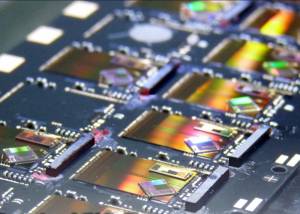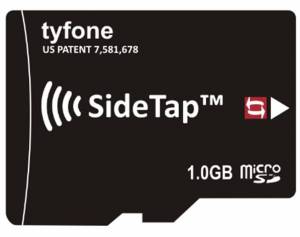NFC Goes Micro
 Near field communication (NFC) is one of the major engines behind the growth of mobile, or contactless payments. An increasing number of smartphone retailers are selling phones that are NFC-enabled.
Near field communication (NFC) is one of the major engines behind the growth of mobile, or contactless payments. An increasing number of smartphone retailers are selling phones that are NFC-enabled.
By downloading an app, Google Wallet for example, you can "tap" your phone at a point of sale that allows mobile payment, without ever having to fish a credit card out of your wallet.
While the convenience is appealing, NFC-enabled phones are still in the minority. The iPhone, for example, is not NFC-enabled, though there are rumors that the fifth generation model may change that.
To give iPhone users the ability to make mobile payments, Moneto, a prepaid mobile wallet application, sells a patented iPhone case embedded with a NFC-enabled MicroSD card. Once the Moneto app is downloaded and installed on the iPhone, users can create a prepaid account and start making purchases at any PayPass-enabled point of sale. Moneto was the first mobile wallet in the US giving iPhone users the ability to pay on-the-go.
Android users can also enable NFC on their phones by inserting the NFC-enabled MicroSD card into the back of the Android. But, because the NFC chip and antenna are scaled to fit on a MicroSD card, there is less energy available to power communication with a point of sale terminal and the read distance to any terminal is reduced.
To enhance the NFC signal, a booster sticker is required. Essentially, an NFC sticker is placed on the inside of the battery cover to amplify the radio signal.
As technology evolves becoming more robust and capable, it seems the devices themselves get smaller. Smartphones are thinner, laptops are lighter, and now, NFC antennae are shrinking.
 Tyfone, a mobile financial and securities solutions provider, announced two new patents last month that will improve the power of NFC integrated into MicroSD. A breakthrough design solution will miniaturize NFC antennae for use in mobile environments, like Tyfone’s own SideTap™ MicroSD cards. In Tyfone’s new design, the point of sale interface is powered by the phone, allowing for a better read distance. There will be no need for external boosters or aftermarket covers.
Tyfone, a mobile financial and securities solutions provider, announced two new patents last month that will improve the power of NFC integrated into MicroSD. A breakthrough design solution will miniaturize NFC antennae for use in mobile environments, like Tyfone’s own SideTap™ MicroSD cards. In Tyfone’s new design, the point of sale interface is powered by the phone, allowing for a better read distance. There will be no need for external boosters or aftermarket covers.
Two U.S. Patents support this new design: US 7,954,716, entitled "Electronic Transaction Card Powered by Mobile Device," and US 7,961,101, entitled "Small RFID Card With Integrated Inductive Element." Tyfone previously announced a Taiwan patent: I336449, called "Electronic Transaction Card."
Tyfone contracts with AboMem Technology Corp. of Taiwan, a leading manufacturer of memory products, to manufacture, distribute and service Tyfone’s SideTap™ MicroSD NFC products. The new design is compatible with exisiting MicroSD manufacturing processes, which allows for scalability and assures that Tyfone will be able to match demand for the product.
Tyfone also plans to make its patents and MicroSD solutions available for licensing, and will provide performance data on the new MicroSD as compared to other solutions to registered parties.
See related articles:
NFC Technology Enhances Print Media
RFID and NFC Technology Magic, Hotel Keys Vanish Into Thin Air
New Reports Forecast Growth in Use of NFC
{jcomments on}
